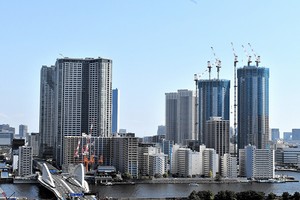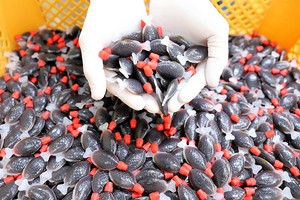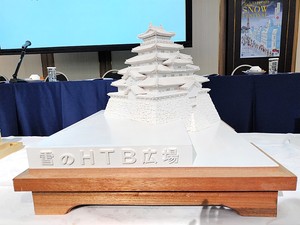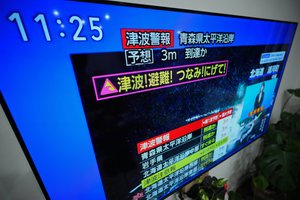By TOMOYUKI YAMAMOTO/ Staff Writer
February 9, 2025 at 07:00 JST
 Japanese eels are raised from natural glass eels in aquaculture farms in Hamamatsu, Shizuoka Prefecture, before they grow large enough for shipment. (Yoshihisa Aoyama)
Japanese eels are raised from natural glass eels in aquaculture farms in Hamamatsu, Shizuoka Prefecture, before they grow large enough for shipment. (Yoshihisa Aoyama)
Changes in ocean currents stemming from global warming have led to a sharp increase in endangered Japanese eel larvae reaching rivers in Hokkaido in recent years, a scientific team found.
The researchers from the Japan Agency for Marine-Earth Science and Technology (JAMSTEC), the University of Tokyo and Hokkaido University said they will study the growth of larvae on the northernmost main island for the purpose of protecting eel resources.
Japanese eels lay eggs in the west of the Mariana Islands, far south of Japan.
After hatching, the larvae drift on the North Equatorial Current and the Kuroshio Current and are then carried to Japan and other parts of East Asia.
Young eels are called “shirasu unagi” (glass eels) when they grow to 5 to 6 centimeters in length before reaching rivers around the country.
The northern limit of the habitat of glass eels was previously believed to be Aomori Prefecture on the northern tip of the main Honshu island.
But they were found in a river in the Iburi region of Hokkaido in 2020, pushing up the limit.
The researchers ran numerical simulations to see how glass eels are carried by ocean currents. They used a supercomputer to calculate how particles representing eel larvae would migrate north from off the coast of Taiwan.
They also took into consideration ocean currents and other maritime environmental data, as well as patterns of the eels’ swimming activities.
The researchers said the probability of larvae reaching Hokkaido in the decade starting in 2014 grew by an estimated 20 times from the figure for the decade starting in 1994.
With the warm Kuroshio Current and its extension shifting northward due to global warming, it has become easier for eel larvae to be carried to higher latitudes, the team said.
“There could be an increase in eels in Hokkaido, so continuous studies are necessary,” said Kentaro Morita, a professor of fish ecology at the University of Tokyo.
In Japan, natural larvae are captured and raised in aquaculture farms until maturity before they are shipped. The Japanese eel is eaten in “kabayaki” grilled style.
But it has been designated an endangered species, and larvae catches have drastically decreased in Japan in recent years.
“Research is needed to see what type of rivers larvae can survive and grow in after they reach Hokkaido,” said Osamu Kishida, a professor of animal ecology at Hokkaido University. “Based on our findings, we want to proceed with the conservation of their habitats and take other measures to help protect eel resources.”




















A peek through the music industry’s curtain at the producers who harnessed social media to help their idols go global.
A series based on diplomatic documents declassified by Japan’s Foreign Ministry
Here is a collection of first-hand accounts by “hibakusha” atomic bomb survivors.
Cooking experts, chefs and others involved in the field of food introduce their special recipes intertwined with their paths in life.
A series about Japanese-Americans and their memories of World War II